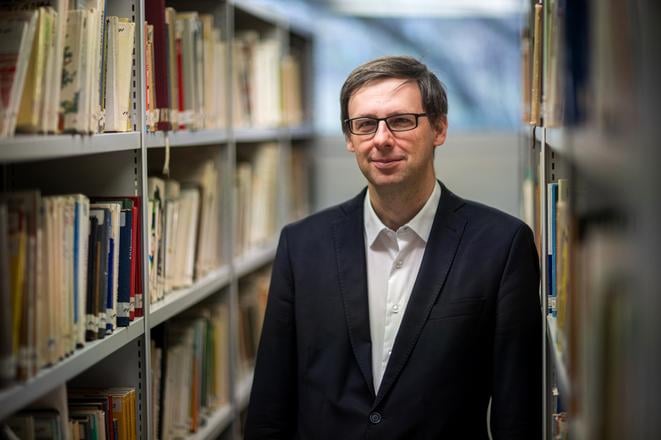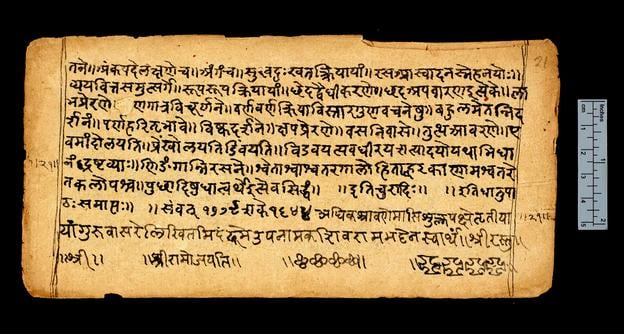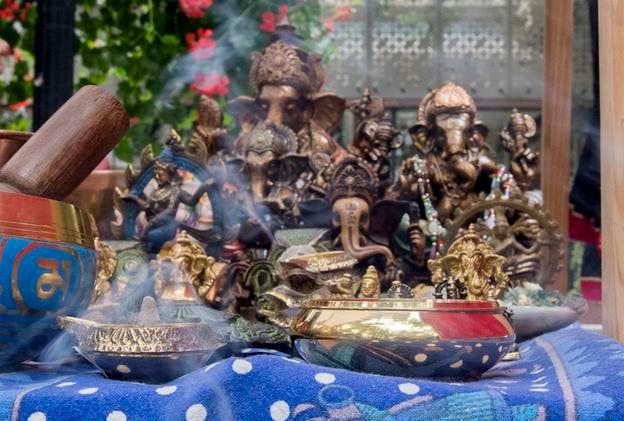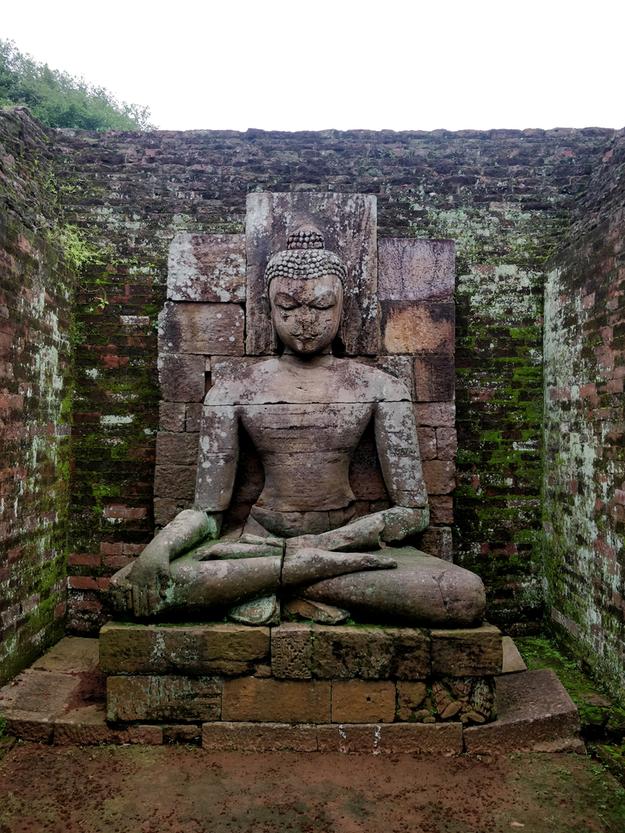For thousands of years, humanity has been trying to understand the universe and its place in it; the mystery had been tackled already in ancient India. The Upanishads are the oldest preserved philosophical texts of mankind. Their origin goes back deeper than the works of ancient Greek philosophy.
Today, they form a significant part of the world's cultural heritage and inspire people even in the 21st century. However, it is only now that they have been translated into Slovak, presented by RÓBERT GÁFRIK from the Institute of World Literature of the Slovak Academy of Sciences.
"The word upanishad refers to that which removes ignorance and brings self-knowledge. It also means a mystery. According to the Upanishads, knowing oneself is the greatest mystery," says the expert, who regularly visits India and has long been devoted to the ancient language of Sanskrit, ancient Indian culture, and cultural clashes between the West and the East.
In this interview you will read:
How the Upanishads can appeal to people of today;
whether they offer solutions to the problems of the world we live in;
whether the Upanishads also contain the seeds of world religions;
whether history should be divided into a period before and after the Upanishads;
what similarities can be found between Sanskrit and Slavic languages;
why Ľudovít Štúr, one of the leading figures of the Slovak national revival, started learning Sanskrit.
How long did it take to translate the Upanishads?
Translated in the book you'll find the 10 so-called main Upanishads. It took me about three years, while the entire book took almost five years, but the book is the result of my 30-year interest in Indian literature and philosophy.
We are talking about texts dating back millennia. What was the most challenging part of the translation?
Finding a way of translating them so that they would be presented as meaningful texts. I knew that they should be perceived as philosophical texts. However, there was no reason to seek a philosophical system in them on my own. What I bring to the Slovak audience are the Upanishads interpreted by Shankara, one of the most important Indian philosophers. Shankara lived in the 8th century, and his interpretation still lives today. When people in India talk about the Upanishads, they often mean his interpretation.
The Upanishads are written in Sanskrit, one of the oldest known languages in the world. Is it correct that sometimes it is called the mother of languages?
From a linguistic point of view, this is not correct. Undoubtedly, Sanskrit is an important part of the Indo-European language family, but it cannot be considered a proto-language. However, comparative research finds many similarities between Sanskrit and European languages, including Slavic languages. It is believed that the Indian and European languages were preceded by the so-called Proto-Indo-European, from which Sanskrit evolved.
Are there really connections between Sanskrit and, say, Slovak?
Certainly. There are similarities on several levels. For example, the fact that Sanskrit nouns are inflected in eight cases. Sanskrit has all the cases Slovak has and one more. Similarities also exist at the word level.
Such as?
For example, "plávať" (to swim) is "plavaté" in Sanskrit. The word "bravími" in Sanskrit means "vravím" (I say), "bravíši" means "vravíš" (you say). The Vedas are the oldest Indian literary work, and the Upanishads are a part of them. And the Sanskrit word "véda" means knowledge and as such bears a similar meaning to the word "veda" (science) in Slovak. A similarity can also be seen in one of the most famous sayings of the Upanishads, which reads "Tat tvam asi", meaning "to si ty" (it is you). It is a key saying considered to be a summary of the meaning of the Upanishads.
It looks quite simple like this.
I do not want to mislead. Despite these similarities, Sanskrit is not an easy language and it takes many years of study to learn it.
You've been to India several times. Is this ancient language still alive there?
I go to India every year and I have seen it being used. For example, I attended a celebratory gathering of a traditional Sanskrit school. Sanskrit is not a dead language like Latin. To this day, there is a small group of people in India who claim that it is their native language. There are specific places where it is used, like the village of Mattur and the neighbouring village of Hosahalli. And literary and philosophical works, newspapers, films are still made in it. Traditional Indian scholars still speak it fluently today.
How many people in Slovakia know Sanskrit?
That is very difficult to say, but I'd say you can count them on the fingers of one hand, maybe two if I'm being optimistic.
Can a young language such as Slovak even begin to contain the concepts and meaning of Sanskrit?
I have encountered some problems. But I don't think this is because Slovak is a young language. They are actually two different language systems. My experience is that each language offers different possibilities. Some basic concepts of the Upanishads are impossible to translate into any European language. That is why I also use Sanskrit words in my translation, for example, I leave key concepts such as atma and brahma untouched. Their meaning is the subject of the philosophical explanations of the Upanishads. They cannot be understood through a single-word or multi-word Slovak expression.
What does upanishad mean?
In Sanskrit, there is a root for every word. The Sanskrit word upanisad is derived from the root sad, which means "to remove", "to achieve" or "to end". Therefore, it means that which removes ignorance and brings self-knowledge. It also means a mystery. According to the Upanishads, knowing oneself is the greatest secret.
Does this mean that the Upanishads are older than ancient Greek philosophy?
Yes, the early Upanishads date back to about the 7th century BC, if not further. They are the oldest surviving philosophical texts in the world.
So they existed before Aristotle. That shatters our idea that everything essential was created in Europe, doesn't it?
In the West we are used to seeing the origins of philosophy in ancient Greece, and the Upanishads are not considered part of how the Western way of thinking developed. That is why such claims may sound shocking. Moreover, in our part of the world, non-European philosophy was until recently more or less a peculiarity and perhaps it still is. Some have even wondered whether the term philosophy can be used to refer to thinking that developed outside Europe. However, in my opinion, the situation has been changing significantly in the last decades in connection with post-colonial criticism and the greater global presence of intellectuals from India or China, as well as with population migration and the availability of information. Thus, non-European thinking is becoming known to the wider public.
What do you think about the idea that instead of dividing history into the period before and after Christ, we should divide it into the period before and after the Upanishads?
This is American philosopher William Irwin Thompson's claim as the sophisticated psychology of consciousness in the Upanishads represents a huge leap in human development. It is a very provocative claim, intended to highlight the significance of the Upanishads. In my opinion, what the Upanishads have to say about consciousness is truly exceptional and deserves the attention of everyone who is interested in the issues of being and consciousness.
Is it possible to say that the Upanishads contain the seeds of world religions?
The Upanishads contain the seeds of Hinduism. However, it should be noted that Hinduism is too broad a term used to describe various Indian religious traditions.
And what about Buddhism? Did the Upanishads influence the Buddha?
The Upanishads are not directly related to Buddhism. However, Buddhism arose in an environment where the oldest Upanishads already existed, and conversely, some Upanishads arose during the development of Buddhism. That is why there are parallels between the two.
In Slovak, Buddhism is written with only one letter d, but you use two d's. Why?
Because in Sanskrit budha and buddha are two different words. The word Buddha means "awakened" and budha is the Sanskrit name for the planet Mercury.
This is not the only case of an inaccurate Slovak transcription of words from Eastern cultures. Should the spelling be reconsidered?
The path of Indian words to Slovak was a complicated one, their pronunciation has also been simplified. For example, in Czech the transcriptions of words from Eastern languages are closer to the original pronunciation, as linguists and orientalists have closely cooperated. Unfortunately, nothing like that happened in Slovakia. Words often enter Slovak through English, which does not recognize, for example, short and long sounds, which in return leads to Slovak having the incorrect transcriptions of words. Had their use been consulted with experts on given languages, it would not have happened.
What form did the oldest Upanishads actually have? Were they originally only transmitted orally?
The most important Upanishads were created in the 1st millennium BC and apparently in a culture without a writing system. This also means that for a long time they were transmitted orally from teacher to student. The latter learned them by heart from the former. In doing so, a certain interpretation was also passed on. Today, there are several interpretations and it is quite natural that they have changed over the millennia. Indological research is trying to uncover their original meaning.
Now that they are on the Internet, doesn't this shift their meaning? After all, it was an intimate teacher to student dialogue. Today, they are, so to speak, up for grabs.
Yes, that is true. In India, serious study of the Upanishads continues to this day, with the teacher explaining them to the students. You are right that they are now freely available, a consequence of the democratisation of knowledge. There is certainly a shift in meaning. However, it has clearly been happening for millennia in India and since the 19th century in Europe as well.
What is inspiring about the Upanishads for you personally?
I was most interested in the method of presenting the knowledge. Specifically, I was attracted by the analysis of wakefulness, dreaming and deep sleep, as well as the interpretation of the cause and effect relationship.
In Slovakia, the fact that there was interest in ancient Indian texts 200 years ago is very little known. You have studied this and you say that Ľudovít Štúr also gave lectures on this topic.
Yes, Štúr began learning Sanskrit even before he left for Halle to study. It is possible that he completed a Sanskrit course there. In Halle, his teacher was August Friedrich Pott, one of the founders of Indo-European studies.
Is it possible to say that Sanskrit inspired him in the creation of Slovak grammar?
It is undeniable that he attempted to transfer some categories of Sanskrit grammar to Slovak grammar. An example is the word "všemeno", which he used to denote what we know as "zámeno" (pronoun). This is Štúr's literal translation of the Sanskrit word sarvanáma.
At the same time, however, Štúr had prejudices and dehumanised the people of India. Why?
In addition to Sanskrit, Štúr was also interested in the history of India. Unfortunately, he was fascinated by Hegel's concept of history too much, according to which India was the country of origin or childhood of the world spirit. However, this spirit had already moved to the West, and for Hegel India remained in its childhood past. Unfortunately, Štúr denied the Indian people the existence of their own will, as well as laws and morality. Sometimes he expressed opinions about things that he did not really understand.
What can these ancient texts tell us people of the 21st century?
I think that all valuable texts can speak to us in some way. The value of the Upanishads comes from their cultural significance in India and how they resonate around the world. Many will also find in them what we could call wisdom. The Upanishads deal with the question of what we are, what is real, what is unreal, what is consciousness. For a person interested in these issues, they will certainly be a worthwhile read. They do not offer any solution to the problems of the world in which we live. On the contrary, they require us to turn inward, which leads to self-knowledge.
The first Upanishad in Róbert Gáfrik's book is Isha Upanishad, to which many comentators ascribe an important place. Its name is derived from the first word of the first mantra.
Mahatma Gandhi famously said, "If all the Upanishads and all the other scriptures happened all of a sudden to be reduced to ashes, and if only the first verse in the Isha Upanishad were left in the memory of the Hindus, Hinduism would live forever."
The mantra reads: Enveloped by the Lord must be This All — each thing that moves on earth. With that renounced, enjoy thyself. Covet no wealth of any man.
Róbert Gáfrik
Works at the Institute of World Literature of the Slovak Academy of Sciences;
focuses on ancient Indian literature, comparative literary studies and cultural clashes between the West and the East;
the author of several books on Sanskrit, the depiction of India in Slovak literature, and India.
©Sme





